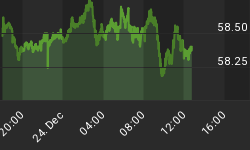We see the October employment report as quelling our forecast of a January rate cut rather than fuelling speculation of further Fed tightening. The 139K in upward revisions in the August-September payrolls should not be a factor in inducing the Fed into renewed tightening. Since the last payrolls report, the bulk of US data releases have been consistently weak, while all price indices have signaled moderating price pressures with the exception of the core PCE price index. The latter, however, has been largely driven by rising home equivalent rent.
Once again the dollar is boosted by strong upward revisions in non farm payrolls, amounting to a total 139K in August and September, while shrugging another weaker than expected payrolls reading for the release month. The dip in the unemployment rate to a 5 1/2 year high of 4.4% from 4.6% played a major role in boosting the US currency, especially as history has shown the Fed had hardly ever cut interest rates without a rebound in the unemployment rate.
The dichotomy between the erosion in goods-producing jobs and expansion in services jobs may help relieve worries of a hard landing. This contrast is also reflected in the divergence between the services ISM -- showing a rise to 57.1 from 52.9 -- and the decline in the manufacturing ISM -- hitting a 3-1/2 year low at 51.2. But it's worth bearing mind the consistency of the erosion in manufacturing and construction jobs, whereby the former has been in the red for the past 4 months, while the latter has oscillated in positive and negative single digit (thousands), before tumbling by 26K in October. Meanwhile, employment in services industries are characterized bythe relatively temporary such as temporary help.
The higher than expected 0.4% rise in average hourly earnings coupled with the increase in hours worked should also temper worries of a hard landing. But the chart shows below, annual average hourly earnings are struggling to maintain an increased margin over inflation (annual core CPI). The downturn in real annual average hourly earnings suggests that the inflationary dangers of wage pay may not be materializing, despite growing consumer core consumer inflation. Real annual AHE averaged 1.3% in Q1 and Q2, followed by 1.1% in Q3. In the event that October annual core CPI matches the September level of 3.0%, then today's AHE translated into a real annual AHE of 0.9%, the lowest since November 2005.

The dollar's sharp rally is partly fuelled by the unwinding of excessive shorts prevailing in the market, as the report scales back expectations of a Q1 rate hike. We do not view the 0.2 percentage point decline in the unemployment rate to dissuade the Federal Reserve from considering an easing if payrolls continue at their volatile pace and the rest of the US data continue sending evidence of a slowdown. When the Fed began its easing cycle in July 1995, it made its decision on the back of a decline in the unemployment rate to 5.6% from 5.8%, and when the Fed began easing in January 2001, it decided so after 4 straight months of a 3.9% unemployment rate, which was the lowest in 8 months.
The extent to which the US dollar continues its recovery into next week, will depend on any surprises in Tuesday's mid-term election outcome and the sell-on-the-fact reaction in the Aussie and sterling after the highly expected rate hikes from the Reserve Bank of Australia and Bank of England. With the Bush tax cuts largely seen in place until 2010, market reaction should be influenced by the interpretation of policy dissent, such as a Democratic-led Congress and Republican White House, or a partisan split between the two chambers.
Fed Chairman Bernanke's speech at the end of week will be crucial in impacting market's perception of the central bank's stance, especially after Board Governor Susan Bies and Dallas Fed Chief Richard Fisher both acknowledged decelerating inflationary while maintaining hawkish directives.
Holding at the 1.2680 support, EURUSD risks extending losses to the 1.2630s, with a floor prevailing at 1.2610. A dollar negative election surprise is seen easily propping the pair back to the 1.2750s, especially if traders witness further unwinding of dollar longs in the IMM commitment records.
The 100-pip rebound in USDJPY is likely to encounter selling pressure at the 118.30s, with stops accumulating at the 61.8% retracement of 118.60. Shorts seen targeting the 55-day MA of 117.60.
















